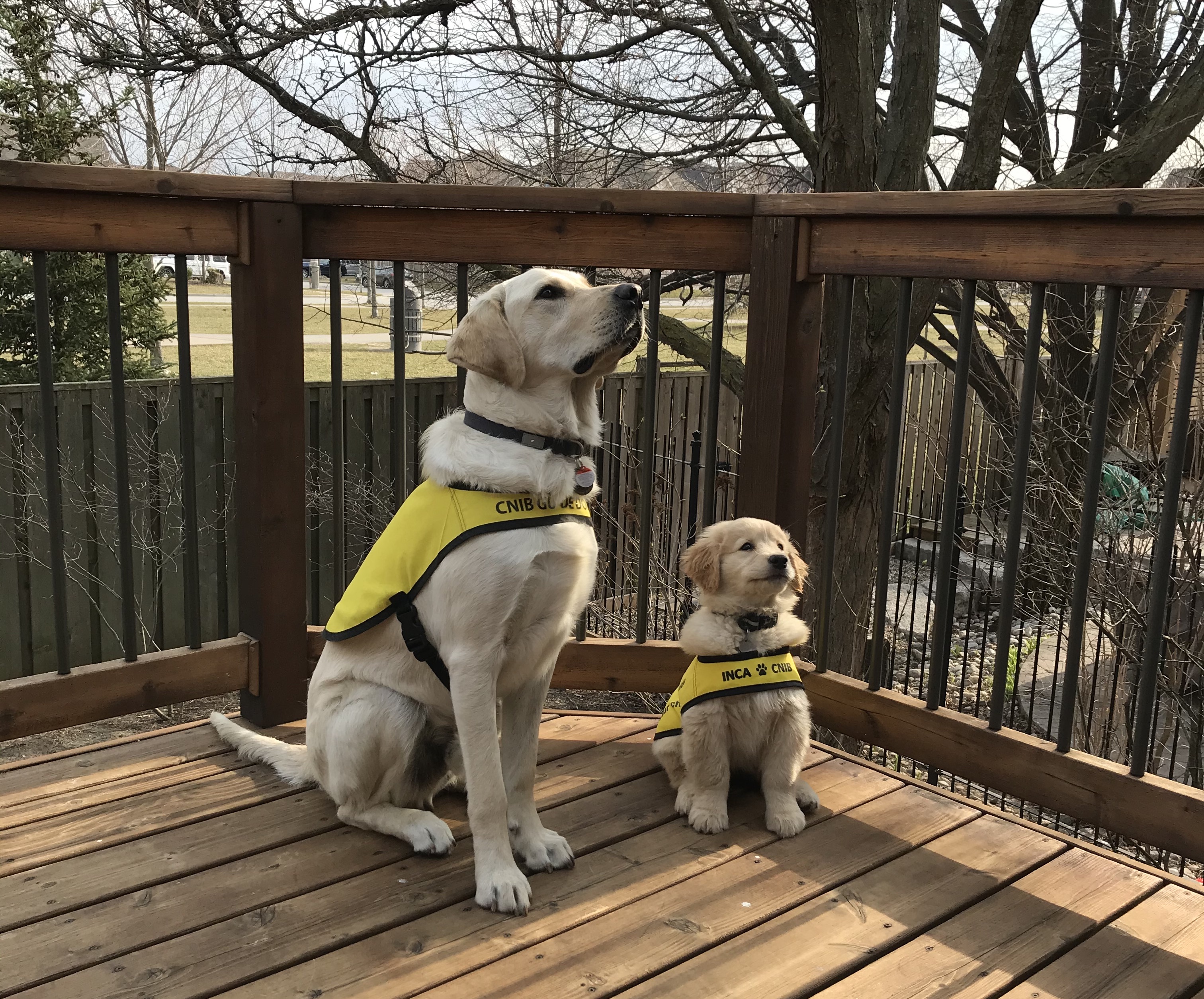In collaboration with the Guide Dog Trainers of CNIB Guide Dogs

Future guide dogs start learning about their world from the moment they are born but training really begins at around eight weeks of age, when the pups are placed with volunteer puppy raisers.
Future guide dogs start learning the basics of obedience from an early age and then practice these skills in different areas with increasing levels of distractions. The primary goal of the puppy raisers is to instill confidence in the pups, so they are ready to learn in any environment or situation.
Led by puppy raising supervisors, our volunteers are careful to make sure our future guide dogs form the appropriate associations between behaviour and outcome. This is as much about preventing unintended learning (like couches are comfy or crumbs on the floor taste good!) as it is about teaching the intended lessons (not jumping on furniture and ignoring food on the ground leads to rewards). Once the dog is between 12 and 17 months of age, formal training begins.
Each dog that comes into training is assigned to a Guide Dog Trainer (GDT) or Guide Dog Mobility Instructor (GDMI). GDTs and GDMIs are qualified through the International Guide Dog Federation. A GDT apprenticeship typically takes 18-24 months while a GDMI apprenticeship typically involves three years of training. Each instructor will have approximately four future guide dogs to train at a time.
The first two weeks of formal training are focussed on establishing a bond between the dog and their trainer. Obedience and impulse control responses are also assessed and strengthened. The dogs are provided with lots of time for play and enrichment activities by the trainer and our Dog Care and Welfare Team.
The dogs are soon introduced to wearing the harness and “the guiding role”. The handler will use a process called guided learning to introduce them to the tasks involved in the guiding role. Support is provided through vocal cues, physical prompts, and the handler’s body positioning. Rewards that are valuable to the dog will be used to reinforce desirable behaviours.
During this training phase, our instructors work with the dogs to help master stopping for curbs, following the straight-line principle, maintaining central sidewalk positioning, learning to respond to directional cues and providing a suitable level of tension through the harness.
The next phase in the training process is called the development stage. At this point, the dogs should understand the fundamental guiding skills and be performing those skills with less support. Developing these behaviours requires an extensive amount of repetition and reinforcement. It is also imperative that these skills are generalized to a variety of environments and situations. Trainers actively seek out environments with the right combination of learning opportunities.
Responsibility for certain decisions is gradually shifted to the dog as the trainer continues to reduce their support levels. Training environments also become more complex with more work content and heightened levels of distractions. More complex skills are introduced like avoiding obstacles, navigating off curbs, locating specific objectives and crossing multi-lane roads.
The final stage of training is called the consolidation stage, when all the behaviours involved in the guiding role are tested. The trainer will reduce most of the support they have been providing at this stage and start to “actively interfere” with the dog’s performance. Active interference involves deliberate action from the handler that will make a task harder for the dog. This may include poor following techniques, stepping over curbs or influencing the dogs off their line of travel. The objective is for the dog to override any of these influences and perform the behaviours as they have been trained to do. This is a delicate process and must be paired with an increased level of reinforcement to avoid confusion and strengthen the dog's knowledge and confidence.
As individual behaviours are consolidated, material rewards (i.e. food and toys) are gradually reduced. This allows the guide dog handler to decide whether they want to use material rewards or alternatively they may use only physical and vocal praise. Final health checks are completed at this stage to ensure the dogs are in optimal health before being matched with a guide dog handler.